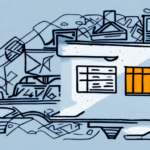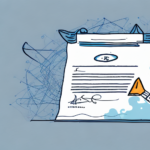Calculating the Total Cost of Ownership (TCO) for Your Business
Calculating the Total Cost of Ownership (TCO) for your business is essential in making informed financial decisions for your organization. TCO measures the complete cost of owning and operating an asset over its entire lifecycle, including initial purchase, maintenance, and disposal, as well as any hidden or indirect costs. In this article, we will discuss the importance of TCO, its components, and methods to calculate it for various assets, including software and technology products.
Why TCO is Important for Businesses
TCO is a critical metric that enables businesses to make well-informed financial decisions regarding their assets and investments. By understanding the total cost of ownership, organizations can assess whether specific investments are worthwhile or if more cost-effective alternatives exist. According to a Forbes Finance Council report, companies that utilize TCO analysis are more likely to optimize their budgeting and forecasting processes.
Beyond financial decision-making, TCO helps businesses identify potential areas for cost savings and process improvements. By analyzing TCO across various assets and operations, companies can uncover inefficiencies and identify opportunities to reduce costs, thereby enhancing profitability and maintaining competitiveness in the market.
Understanding the Components of TCO
TCO encompasses all costs associated with acquiring, operating, and disposing of an asset. These costs are typically categorized into three main components: acquisition costs, operational costs, and replacement or disposal costs.
- Acquisition Costs: This includes the initial purchase price of the asset, as well as any costs related to acquiring it, such as shipping, installation, and setup fees.
- Operational Costs: These are ongoing expenses required to maintain and operate the asset, including maintenance, repairs, energy consumption, and any necessary updates or upgrades.
- Replacement/Disposal Costs: This involves the costs associated with disposing of the asset at the end of its useful life and the cost of purchasing a new replacement if necessary.
Understanding these components provides a comprehensive view of the true cost of asset ownership, enabling better financial planning and decision-making.
The Hidden Costs of Ownership
One significant advantage of calculating TCO is the identification of hidden costs that are not immediately apparent during the initial acquisition phase. These hidden costs can include licensing fees, maintenance expenses, and downtime resulting from repairs or upgrades.
For instance, licensing fees for software can significantly add to the total cost over time. Additionally, if a piece of machinery requires frequent maintenance or unexpected repairs, these ongoing costs can surpass the initial purchase price, impacting overall profitability.
Another often-overlooked cost is the training required for employees to effectively utilize a new asset. Whether it's a sophisticated software system or complex machinery, proper training ensures that employees can operate the asset efficiently, reducing errors and increasing productivity. However, training programs can be costly and time-consuming, adding to the total cost of ownership.
Moreover, businesses must consider the potential risks associated with asset ownership. For example, unexpected equipment failures can lead to operational delays and lost revenue, while security breaches in software applications can result in data loss and reputational damage. Factoring in these risks allows businesses to make informed decisions about asset investments and implement appropriate mitigation strategies.
TCO vs. Upfront Cost: Which is More Important?
While the upfront cost is a key consideration in investment decisions, it should not be the sole factor. TCO provides a more comprehensive understanding of the financial implications of asset ownership by accounting for long-term costs. In many cases, an asset with a higher initial cost may have a lower TCO due to lower maintenance and operational expenses.
For example, investing in high-quality equipment that requires minimal maintenance can result in lower total costs over its lifespan compared to cheaper alternatives that incur frequent repair costs. Similarly, software solutions with higher licensing fees might offer better support and fewer hidden costs, making them more cost-effective in the long run.
Incorporating TCO into the decision-making process allows businesses to evaluate investments based on their long-term financial impact rather than short-term expenditure. This holistic approach ensures more sustainable and strategic financial planning.
Evaluating TCO for Different Types of Assets
TCO analysis is applicable to a wide range of assets, including physical equipment, software, and technology products. To accurately calculate TCO, it is essential to consider the entire lifecycle of the asset, from acquisition to disposal, as well as any additional costs related to maintenance, repairs, and upgrades.
For example, when evaluating software products, businesses should consider not only the purchase or licensing costs but also ongoing subscription fees, support services, and potential upgrade expenses. Similarly, for physical assets like machinery, factors such as energy consumption, maintenance schedules, and replacement costs must be included in the TCO calculation.
Additionally, external factors such as market fluctuations, regulatory changes, or technological advancements can impact TCO. For instance, new environmental regulations may necessitate additional maintenance or upgrades to existing equipment, increasing its total cost of ownership. By accounting for these variables, businesses can make more informed investment decisions that align with their strategic goals and market conditions.
How to Calculate TCO for Software and Technology Products
Calculating TCO for software and technology products involves a detailed assessment of both direct and indirect costs. The primary components include the initial purchase or licensing fee, ongoing subscription or maintenance costs, and any expenses related to updates or upgrades.
Moreover, the cost of training employees to effectively use the technology should be included in the TCO calculation. As highlighted by TechRepublic, effective training programs can reduce the time and resources required to achieve full operational efficiency with new software.
Support and technical assistance are also critical factors. High-quality support services can minimize downtime and resolve issues quickly, thereby reducing the indirect costs associated with lost productivity. Additionally, businesses should consider the potential cost savings that the technology may offer, such as increased efficiency, improved data management, or enhanced customer service capabilities.
By thoroughly analyzing these factors, businesses can determine the true cost of their technology investments and select solutions that offer the best balance of cost and functionality.
The Impact of TCO on Budgeting and Forecasting
Understanding TCO is essential for effective budgeting and financial forecasting. By incorporating TCO into financial planning, businesses can allocate resources more accurately and anticipate future expenses associated with asset ownership.
According to a CIO.com article, organizations that integrate TCO into their budgeting processes are better equipped to manage cash flow and avoid unexpected costs that can disrupt financial stability.
Furthermore, TCO analysis can assist in identifying cost-saving opportunities and optimizing resource allocation. By understanding the long-term financial implications of different assets and investments, businesses can prioritize spending on those that offer the highest return on investment and align with strategic objectives.
Additionally, incorporating TCO into forecasting models allows businesses to predict future financial needs more accurately, facilitating proactive decision-making and strategic planning.
Common Mistakes to Avoid When Calculating TCO
Accurate TCO calculation requires a comprehensive consideration of all associated costs. However, businesses often make several common mistakes that can lead to inaccurate TCO estimates:
- Overlooking Hidden Costs: Ignoring indirect or hidden costs such as training, licensing fees, and maintenance can result in an underestimation of the true TCO.
- Focusing Solely on Upfront Costs: Concentrating only on initial purchase prices without considering long-term operational and maintenance expenses can lead to misguided investment decisions.
- Neglecting Environmental Factors: Failing to account for external factors like climate conditions or regulatory changes can result in unexpected costs that elevate the TCO.
- Inadequate Lifecycle Analysis: Not considering the entire lifecycle of the asset, including disposal and replacement costs, can lead to incomplete TCO calculations.
- Ignoring Risk Factors: Underestimating the impact of potential risks, such as equipment failure or security breaches, can overlook essential cost considerations.
To avoid these pitfalls, businesses should adopt a holistic approach to TCO analysis, ensuring the inclusion of all relevant cost factors and regularly updating their calculations to reflect changing circumstances.
Strategies for Reducing TCO Over Time
Reducing TCO is a fundamental aspect of improving financial efficiency and enhancing profitability. Here are some effective strategies to minimize TCO over time:
- Implement Preventative Maintenance Programs: Regular maintenance can prevent costly repairs and extend the lifespan of assets, reducing long-term operational expenses.
- Invest in Energy-Efficient Equipment: Energy-efficient assets consume less power, resulting in significant savings on utility bills and lowering operational costs.
- Optimize Licensing and Subscription Models: Evaluating and negotiating licensing agreements or subscription plans can help reduce software and technology costs without compromising functionality.
- Leverage Technology Upgrades: Upgrading to newer, more efficient technologies can enhance performance and reduce maintenance and operational expenses.
- Negotiate with Vendors: Building strong relationships with vendors can lead to better pricing, extended warranties, and favorable contract terms that contribute to lower TCO.
By continuously evaluating and implementing cost-reduction measures, businesses can effectively manage and minimize TCO, ensuring sustained financial health and competitive advantage.
Case Studies: Examples of Successful TCO Management in Businesses
Numerous businesses have successfully managed TCO to enhance their financial performance and operational efficiency. Here are a couple of examples:
- Energy-Efficient Manufacturing: A leading manufacturer implemented energy-efficient machinery, resulting in a 20% reduction in energy costs and a 15% decrease in maintenance expenses over three years.
- Software Licensing Optimization: A mid-sized enterprise conducted a TCO analysis of its software portfolio, identifying redundancies and negotiating better licensing terms. This led to a 25% reduction in licensing costs and enhanced software utilization across the organization.
These case studies demonstrate how strategic TCO management can lead to substantial cost savings and improved ROI. Businesses can draw inspiration from these examples and apply similar TCO strategies to their operations.
Tools and Resources for Calculating TCO Accurately
Accurate TCO calculation requires the use of reliable tools and resources. Fortunately, several options are available to assist businesses in this process:
- Online TCO Calculators: Various websites offer free TCO calculators that help estimate the total cost of ownership for different types of assets. These tools typically require inputting data related to acquisition, operational, and disposal costs.
- Software Solutions: Dedicated TCO software tools provide more comprehensive analysis capabilities, enabling businesses to model different scenarios and assess the impact of various cost factors in detail.
- Vendor-Specific TCO Calculators: Many vendors provide TCO calculators tailored to their products and services, allowing businesses to compare costs across multiple options within the same category.
- Industry Reports and Whitepapers: Reputable sources such as Gartner, Forrester, and other industry research firms publish reports and whitepapers on TCO best practices and methodologies.
Utilizing these tools and resources can enhance the accuracy of TCO calculations and support more informed decision-making.
The Role of TCO in Purchasing Decisions
TCO plays a pivotal role in the purchasing decisions of businesses by providing a comprehensive view of the long-term costs associated with different assets or investments. By evaluating TCO alongside upfront costs, businesses can determine the most cost-effective options that align with their strategic objectives and budgetary constraints.
For example, when selecting software solutions, a business may choose a higher-priced option with lower operational costs and better support services over a cheaper alternative with hidden fees and higher maintenance expenses. This approach ensures that the investment delivers sustained value and contributes positively to the organization’s bottom line.
Incorporating TCO into the purchasing decision framework encourages a more strategic and forward-thinking approach, ensuring that investments support long-term business goals and provide a favorable return on investment.
Comparative Analysis: How to Use TCO to Compare Products or Vendors
Comparing TCO across different products or vendors allows businesses to evaluate the overall value and cost-effectiveness of each option. This comparison involves assessing both direct and indirect costs associated with each choice to determine which provides the best long-term advantage.
To conduct a comparative TCO analysis:
- Identify Key Cost Factors: Determine which cost factors are relevant for the assets or services being compared, such as purchase price, maintenance costs, energy consumption, and support fees.
- Collect Data: Gather accurate and comprehensive data for each cost factor from reliable sources, including vendor quotes, industry benchmarks, and internal financial records.
- Calculate TCO: Use a consistent method to calculate the TCO for each option, ensuring that all relevant costs are included and properly accounted for.
- Analyze Results: Compare the TCO results to identify which option offers the lowest total cost over the asset’s lifecycle while meeting the required functionality and performance standards.
By systematically comparing TCO, businesses can make more informed and objective purchasing decisions, selecting products or vendors that offer the best overall value and alignment with their strategic goals.
Future Trends in TCO Management for Businesses
As businesses increasingly focus on cost-efficiency and long-term value, the role of TCO in financial decision-making continues to evolve. Future trends in TCO management may include:
- Increased Adoption of Automation Tools: Advances in technology will facilitate more sophisticated TCO calculations, incorporating real-time data and predictive analytics to enhance accuracy and decision-making.
- Greater Integration with Financial Systems: TCO analysis tools will become more integrated with enterprise resource planning (ERP) and budgeting systems, streamlining the process of TCO calculation and reporting.
- Emphasis on Sustainability: As environmental considerations become more critical, TCO calculations will increasingly factor in sustainability metrics, such as carbon footprint and energy efficiency, influencing asset selection and management.
- Enhanced Focus on Data Security: With the growing importance of data protection, TCO will incorporate security-related costs and risk mitigation expenses, particularly for technology and software investments.
Keeping abreast of these trends will enable businesses to refine their TCO management practices, ensuring that they continue to make informed and strategic financial decisions in an evolving business landscape.
In conclusion, calculating TCO is a vital process for making informed financial decisions within your organization. By comprehensively understanding the true costs associated with asset ownership, businesses can enhance their financial stability, reduce long-term expenses, and increase their return on investment. Implementing thorough TCO analysis ensures that investments are strategically aligned with the organization's goals and that resources are utilized in the most cost-effective manner.




















